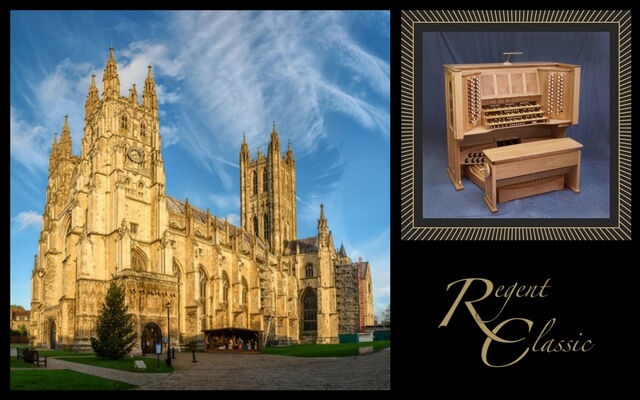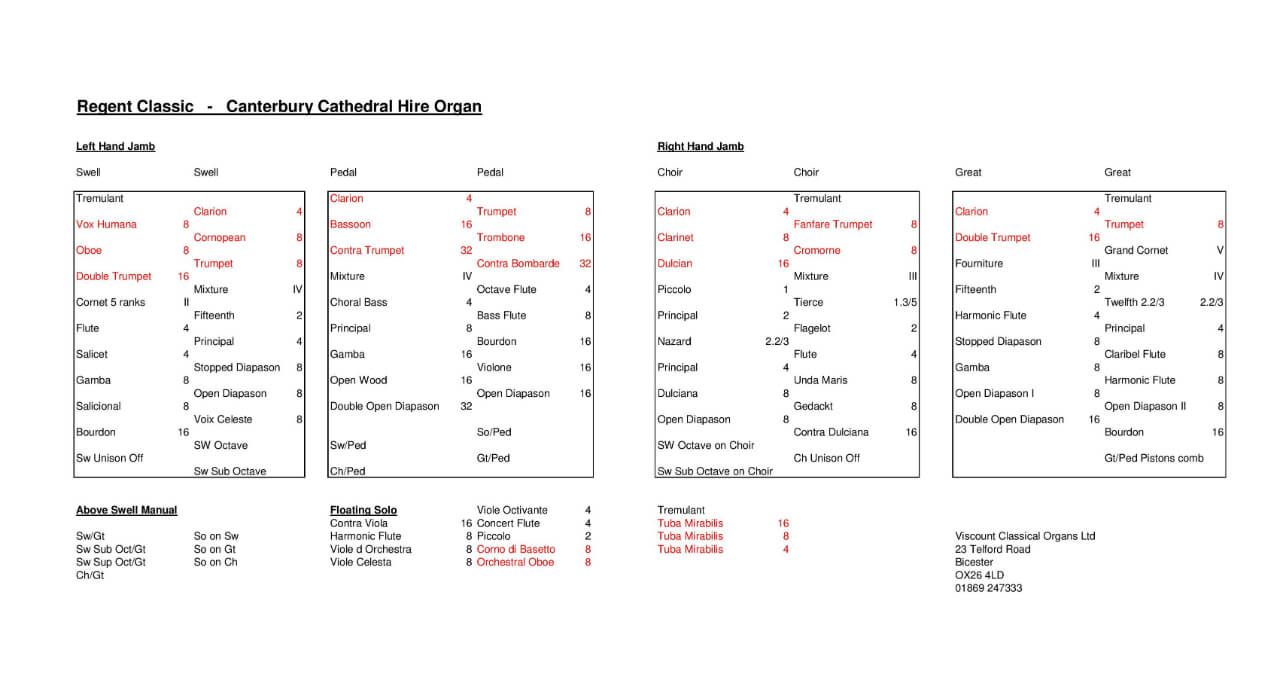In early 2017, we visited Dr David Flood, Organist and Director of Music at Canterbury Cathedral to discuss the provision of a temporary digital organ to help provide cover while the pipe organ was being rebuilt by Harrison & Harrison as part of The Cathedral’s Organ Project. To find out more and support the project, which sits at the heart of the Cathedral’s music campaign, visit www.thecanterburyvoice.org.
Almost a year to the day, we set off to install our organ at the Cathedral, 140 miles south east of our showroom in Bicester. This is the second blog post sharing our experience on this amazing project with you. You can find the first blog here.
These are my musings from day two of this project…
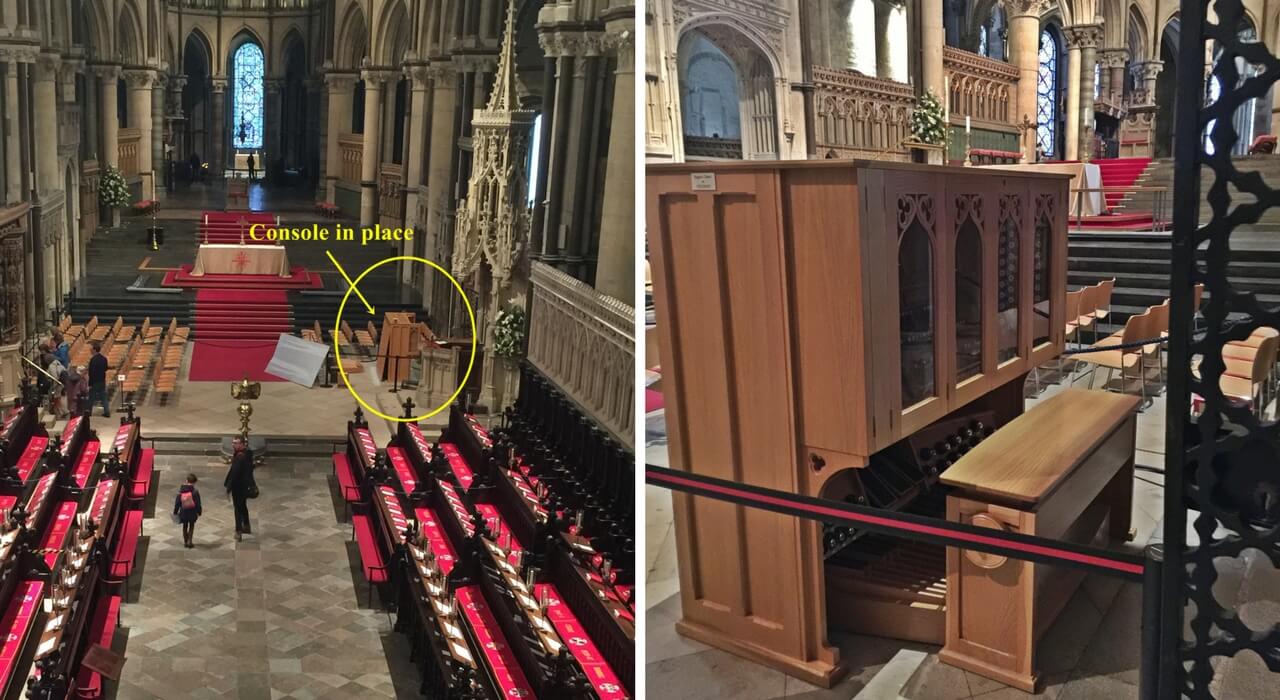
With our first day safely put to bed around 10pm, we woke to day two – determined to explore our ideas for solving some of our technical challenges.
Solving technical problems late at night, at the end of a very long day is never the best time to think issues through! Discussion over dinner had given us some options and I was very anxious to explore these at the start of our second installation day.
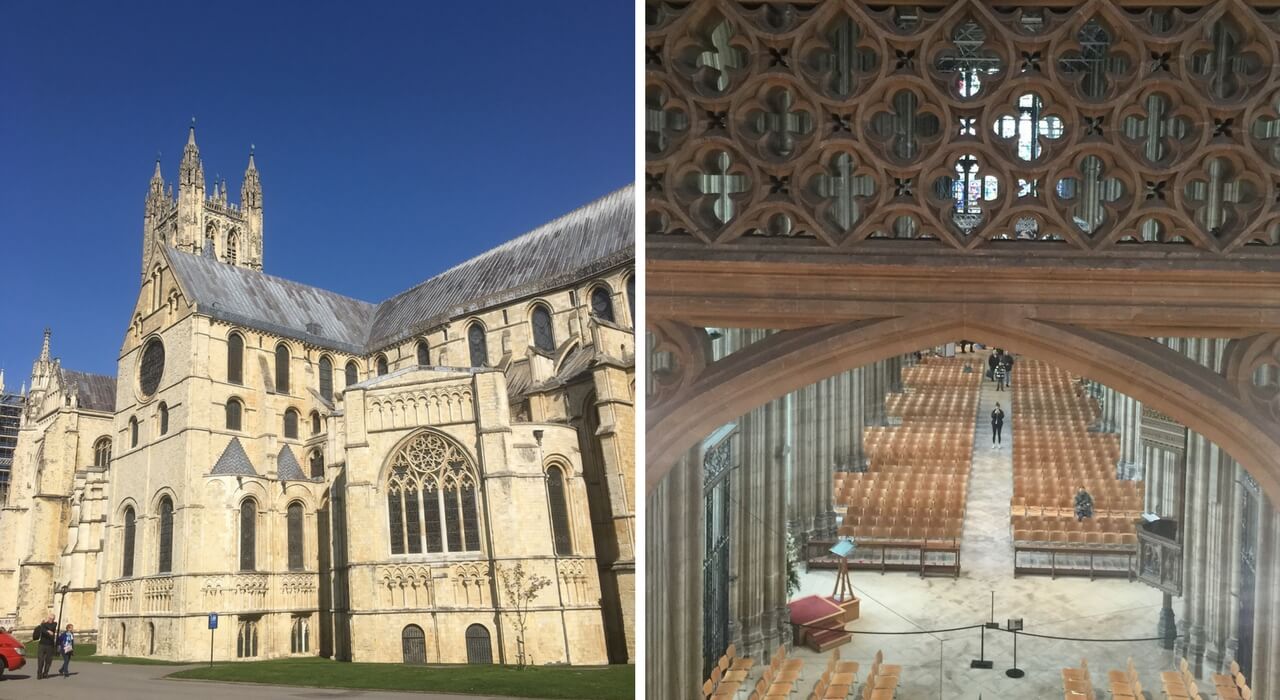
Adjusting for the power of sound
When using amplifiers of this level of power as we have for this project, we always arrange for them to start up in sequence. This is because the initial ‘start current’ can be high even for so called ‘soft start’ amplifiers.
To do this we had made a switching box that used 10 electro-mechanical 12-volt relays to activate the 240 volts to the amplifiers. Despite having been bench tested, it transpired that the relays required more power to hold them open when seeing a 240-volt current than when the 240-volt side was switched off.
We had bench tested the box alone, but not when there was amplifier load on the relays. Our selected 12-volt supply did not have sufficient power to hold all 10 relays open. All I can say is thank goodness for the internet! After a quick Google search, we found a replacement power supply at a nearby electrical wholesaler.
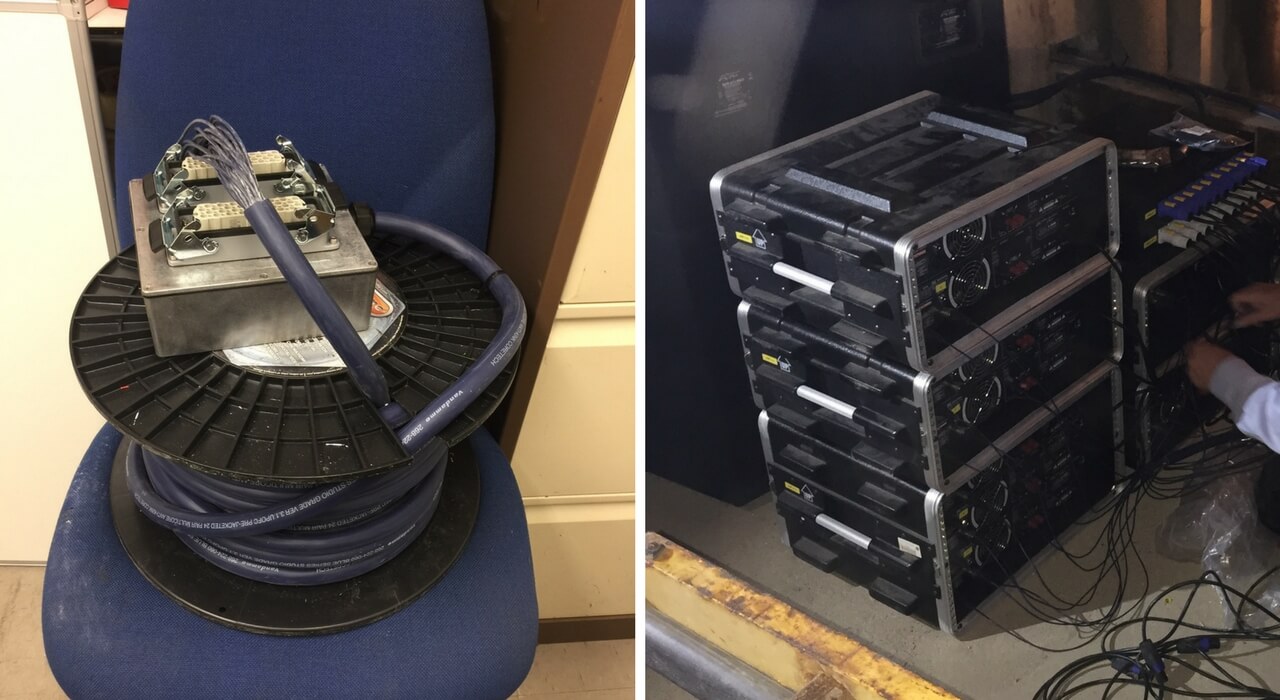
Later in the day we had all amplifiers running properly but we could not play the instrument until after 7pm due to events running after evensong that evening. So close…but still a frustrating time to wait to hear the instrument at work!
Connecting the speakers
There was no rest of course though, because this day was actually set aside for connecting the Nave speaker system. A 24-core signal cable had already been put in place by the Cathedral electricians. This ran from our triforium ‘hub’ down to the south aisle window-sill about 100 metres away.
‘Hot working’ in the Cathedral roof spaces is to be avoided due to fire risk so we had arranged for all connections in the triforium to be made in our workshop. We just had to plug in a 24-channel plug into the pre-made socket junction.
In the Nave however, we did have to solder on 20 XLR connectors. This could not be prepared in advance as it was far from certain just how long this cable run would be, snaking its way as it does about 70 metres westward and from triforium level down to near the Nave floor 20 metres below. It also passes by all the pipe organ soundboards.
I do hope the team from Harrison & Harrison take care not to damage it when they remove the pipe organ!
Placing the speakers
The job of placing the Nave speakers was complicated – working as we were – close to a great many stone monuments on the walls below the Nave windows. If this was a job anywhere else we would probably have done it from ladders – but here we had to work off of a scaffold tower.

You might think that this made life easier, but in fact it slowed us down considerably. Moving the tower took time and it had to stay well away from the monuments which stood quite far off the wall. So at the top of the scaffolding we were about half a metre from the window sill and had to stretch uncomfortably far to reach the working zone.
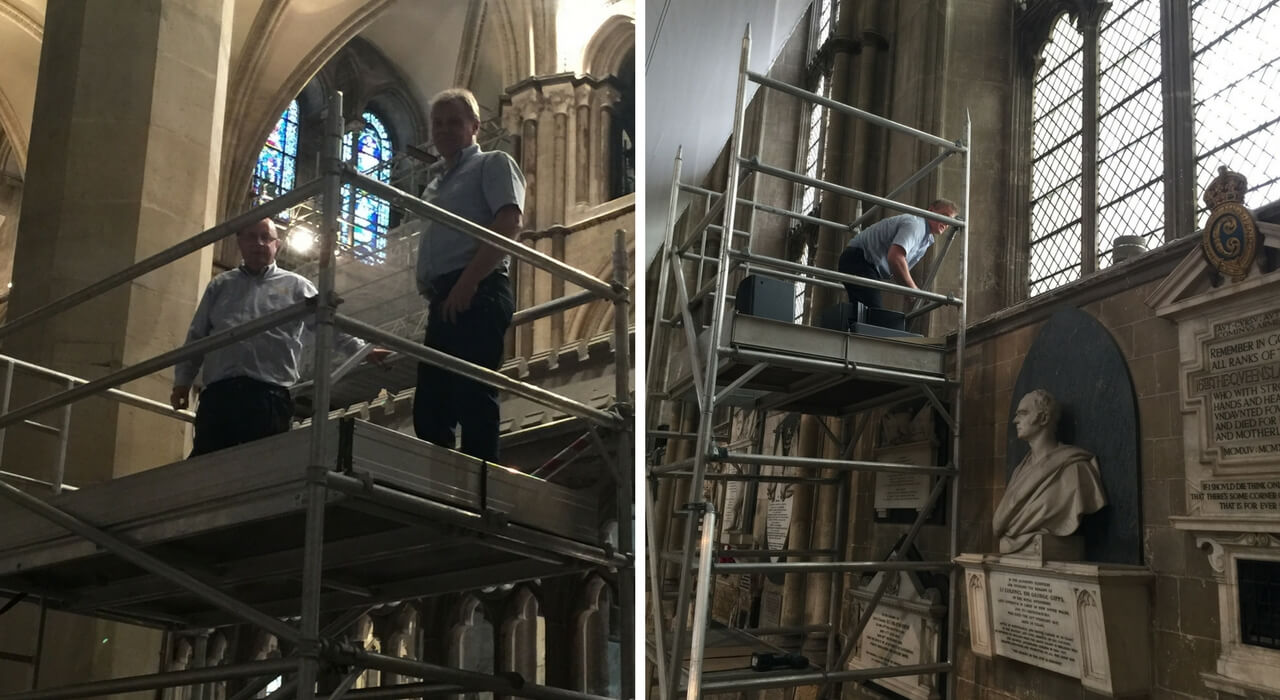
The space available on the window sills also proved to be insufficient to place the planned 20 speakers and we had to reduce this to 18, so the decision was taken to exclude the solo division from the Nave organ.
The first most easterly window sill also housed the large bass speaker and the amplifier racks so a mains power supply had also been provided at this point. All power supplies were linked to the ‘yellow’ phase of the 3-phase supplies. This is most important as connecting different parts of this complex and large system to different phases could result in the voltage difference far exceeding 240 volts.
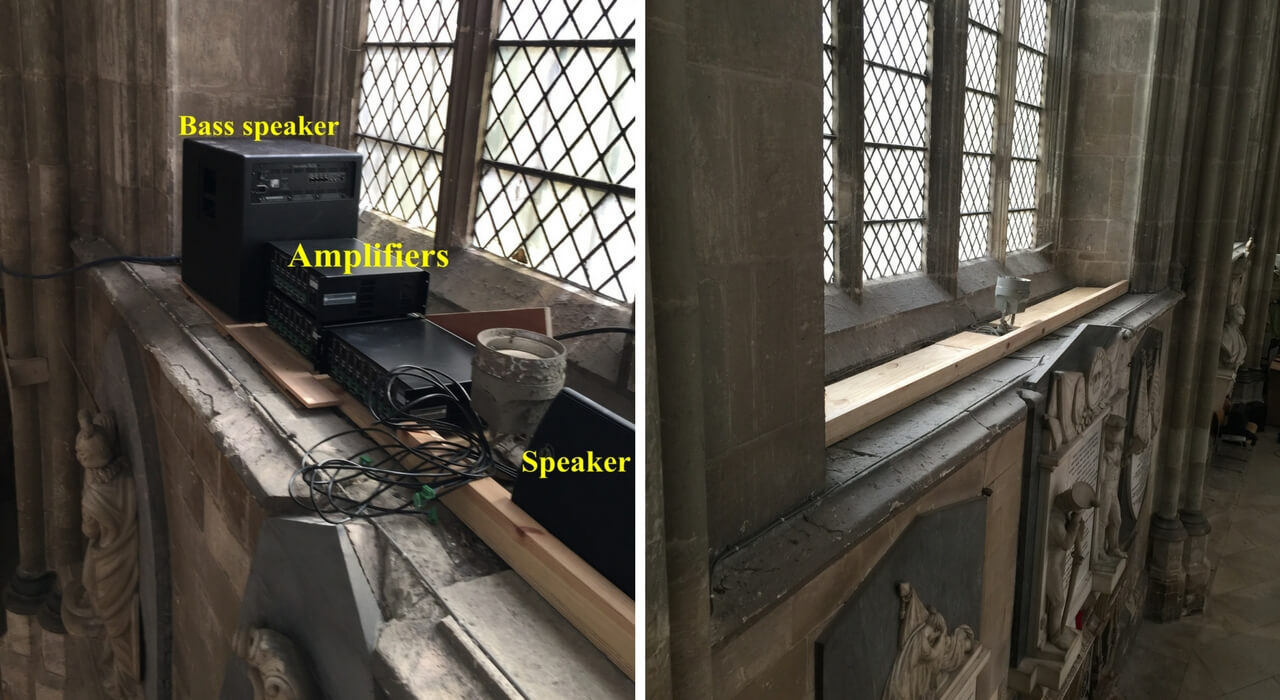
While this may not damage the equipment, it could be potentially lethal to anyone working on the equipment with potential for a shock well above the 240 volts normally seen in domestic situations (and which happily do not often prove fatal).
Finally, just after 5pm all this work was completed. This job that I had estimated at a half day’s work took up the full time until we had to leave the building at 5.15pm for the evensong service.

Time for a break, before testing the organ sound
As we needed to vacate the Cathedral during evensong service, this was a good opportunity for the team and I to take a break. We decided to find a local restaurant to get a good meal, and in my case a taste of some local ale, and then be ready to return after 7pm for the final push.
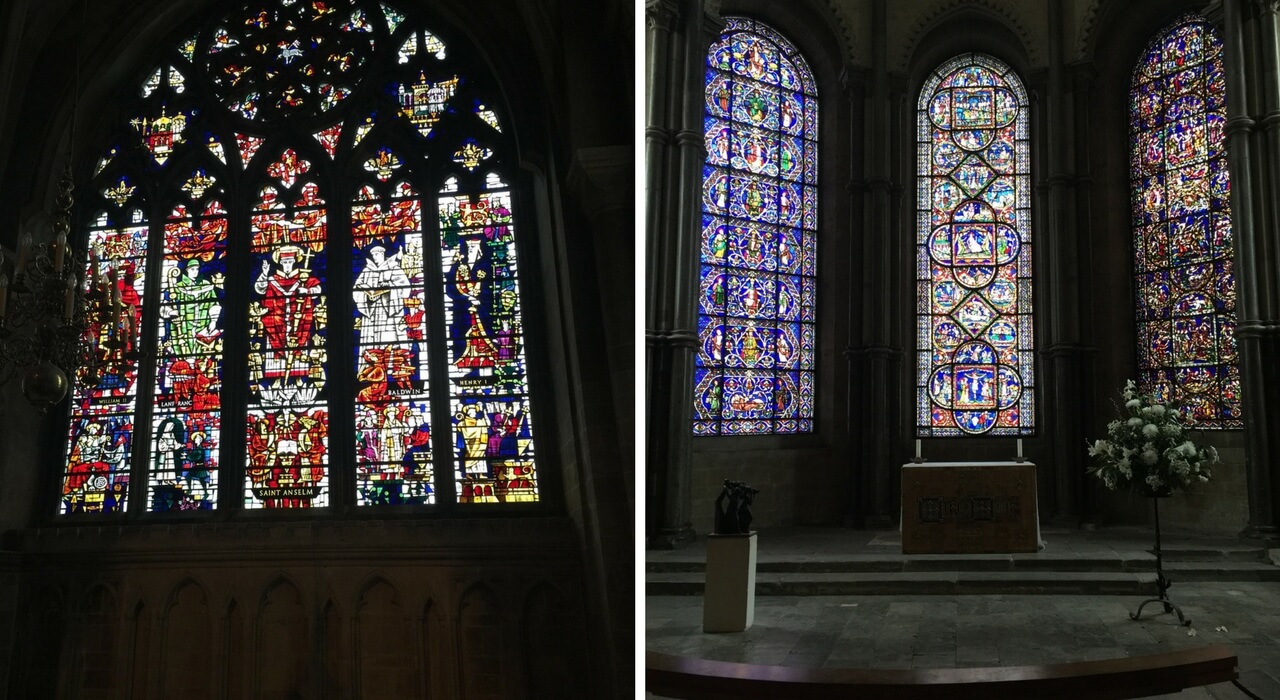
The final “unknowns” were now limited to the remote switching ON of the Nave amplifiers from a switch on the console, some 120 metres away. We had used solid-state power supply switching in the Nave, as it demands almost no current to work, and much to all our delight that worked perfectly first time as did all the audio signal feeds.
So finally, by about 8.30pm on Tuesday 10th April, a full organ was heard by us in the Nave! The organ played itself, from a recording I had made of the Dorian Toccata and stored in the instrument’s solid-state memory.

We were pleased to hear the audio signal reaching the Nave through a complex junction box and a great number of soldered joints (240 if I have counted correctly – so plenty of scope for a ‘dry joint’ issue). It worked perfectly first time! A very happy crew it has to be said.
This is testament to my colleagues whose hard work and prior thought and preparation in the preceding weeks enabled our biggest challenge so far to work (almost) without a hitch.
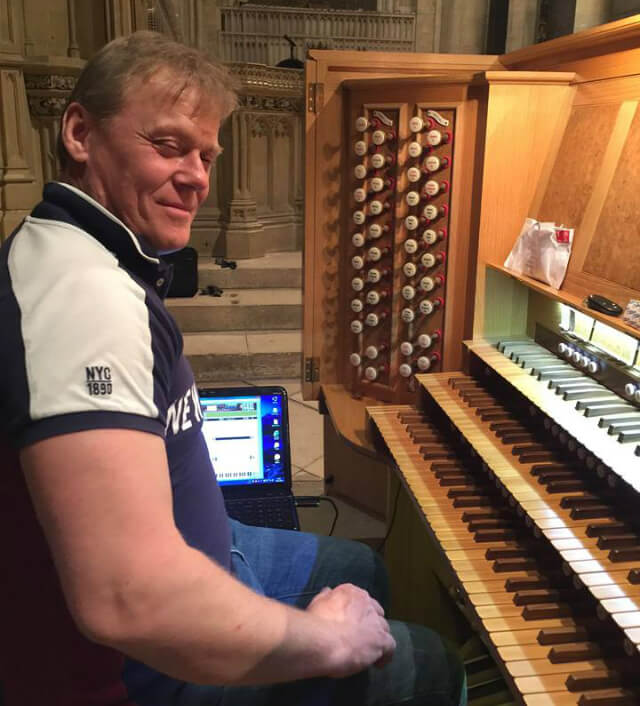
And then…on to the triforium organ testing
By 9pm the triforium organ was playing fully and the work of knocking it into shape could begin. The recording that you can hear below is what I recorded after just an hour’s voicing the Great division.
We left everything else untouched, as we needed to address them in a later visit. There’s a bit of distortion on the loudest parts in the recording, as we didn’t have time to calibrate levels precisely, but that’s my recording rather than the organ itself!
For interest, I have (what will be) one of the last recordings of the pipe organ before its removal. It was recorded from the same place in the Nave so is a good comparison for you to make up your own mind on how the speakers of our instrument compare with the pipes of the Willis instrument.
You can also watch this video from Canterbury Cathedral’s own YouTube channel. It is an interview with David Flood and a tribute to the old pipe organ.
A privilege to work in the Cathedral
There can be no doubt that being entrusted to provide a temporary instrument for Canterbury Cathedral would be the pinnacle of any digital organ company’s clientele list. I have to say though, to have been able to play not only our instrument in the Cathedral, but also the pipe organ is an amazing privilege.
To look forward to the next two years where our Regent Classic instrument will be relied upon to continue the musical life of the Cathedral is a daunting responsibility. Pipe organs are allowed to have their problems and are forgiven for them.
Digital instruments however seem to be expected to fail and a certain part of the musical community seems to rejoice in such events, using them to support an Orwellian-style philosophy: ‘Pipes good, speakers bad’.
I very much hope that we can deliver the consistency and quality that befits this great Cathedral over the following 24 months.
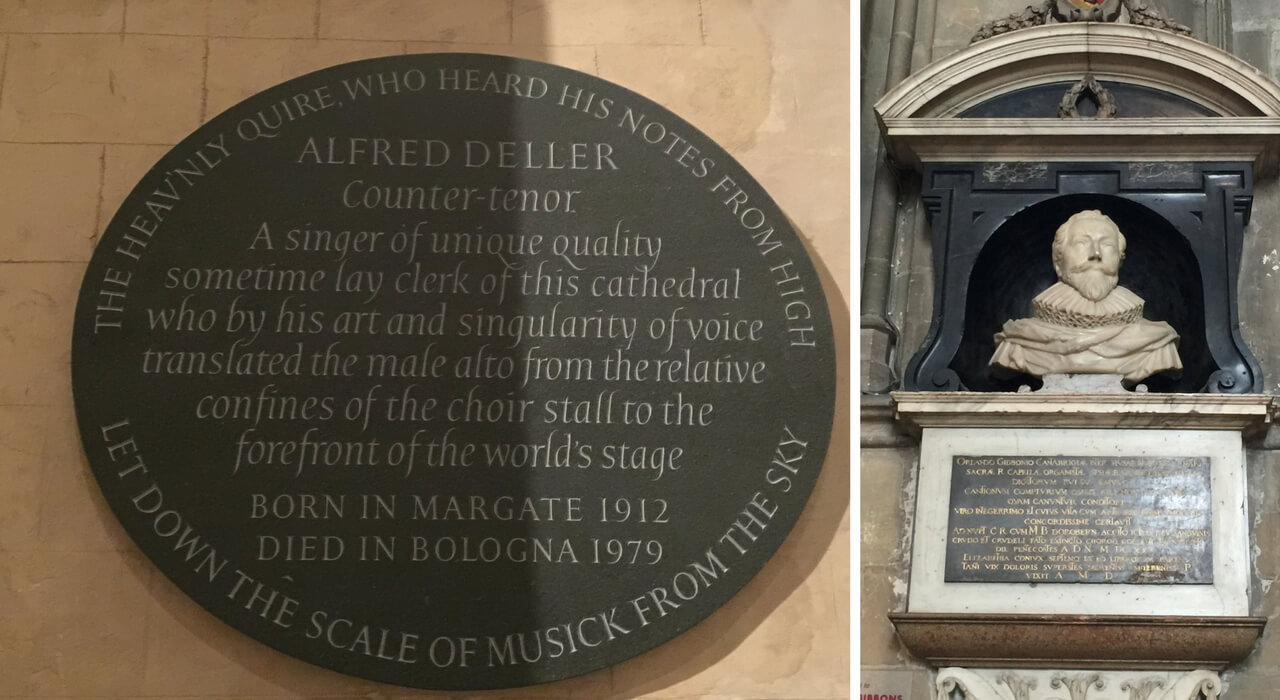
If you have got this far thank you for reading all the way. Please do share with us your thoughts on this installation, especially if you get to hear it in the building over the next two years. I would love to hear from you.
And finally…
Can I leave you with this intriguing picture of a cat flap cut into one of the doors that access the stairs that take you to triforium level? I thought you could do with a smile at this unique feature!
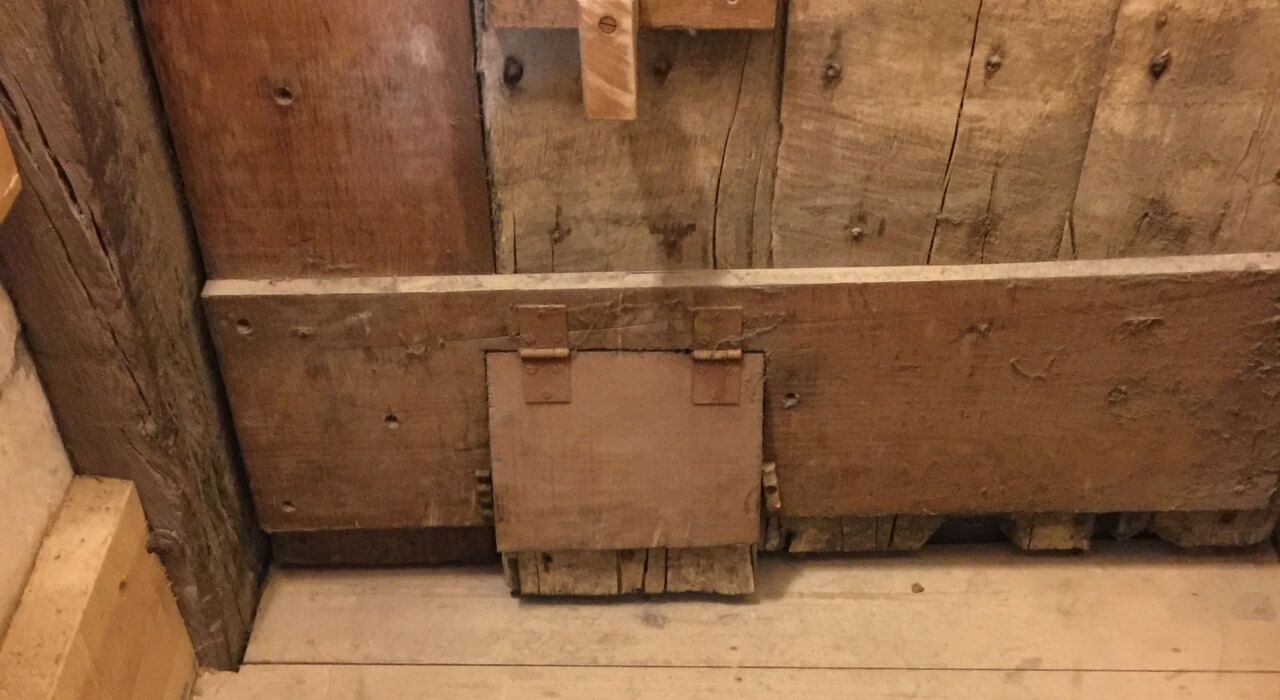
You can see it is an old door – the nails are handmade, too long for their job so flattened over onto the wood they penetrate. Cut in at the bottom is a cat flap. You can tell from the hinges it must be near 100 years old. But you will see it is a one-way door only. Perhaps somewhere else in the building there is a partner door, similarly one-way, but in the ‘out direction’ lest entering cats are destined to walk the corridors of this medieval space for eternity. Just a thought!
I have had a passion for church organs since the tender age of 12. I own and run Regent Classic Organs with a close attention to the detail that musicians appreciate; and a clear understanding of the benefits of digital technology and keeping to the traditional and emotional elements of organ playing.
